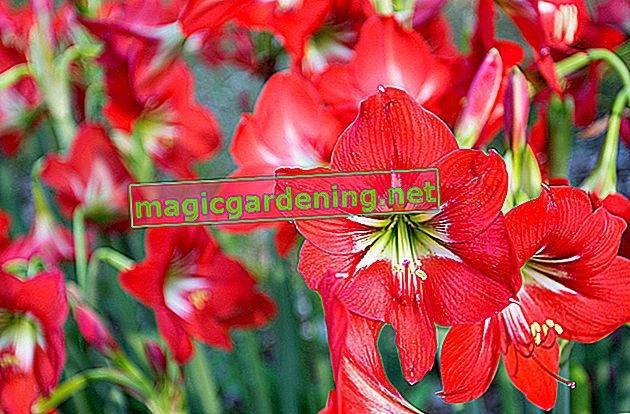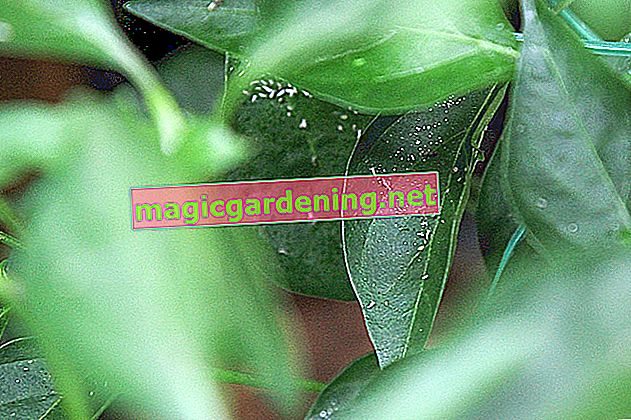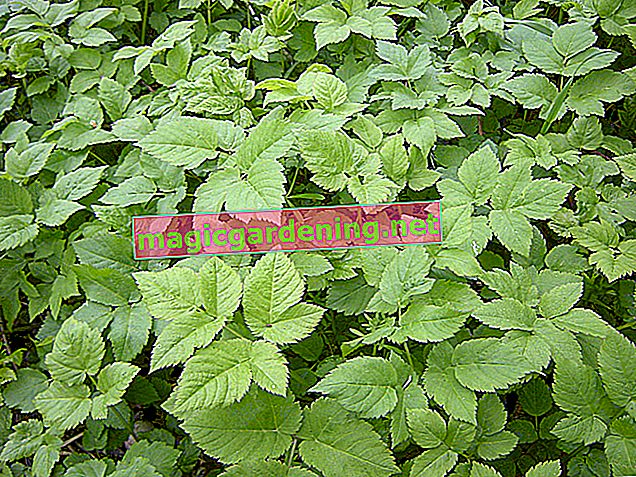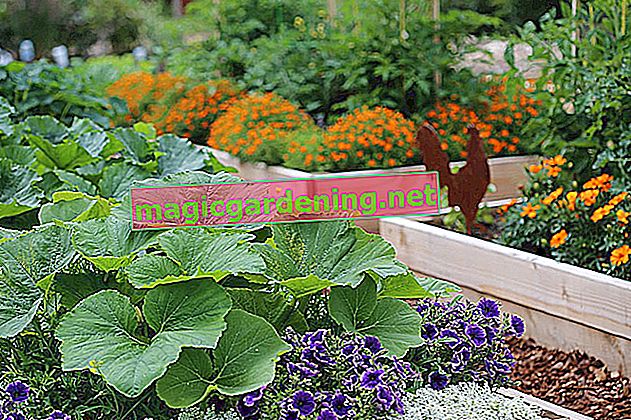
Plant garden cress properly
We recommend planting in early autumn so that the charming rockcress shows the floral power it has in its first season. In the sunny location, create several planting holes at a distance of 20-30 cm, as the perennial comes into its own in small groups. Enrich the excavation with bark humus, compost and horn shavings. In each pit, place a potted plant deep enough that the substrate just reaches the lower pair of leaves. On the day of planting and in the following period, an abundant water supply contributes to rapid rooting.
also read
- When is the flowering time for rockcress?
- Not just a feast for the eyes - rockcress is edible
- The rock cress: care on the back burner
Care tips
The rockcress requires little maintenance from the gardener. The nutrient supply in the bed is limited to starting fertilization with compost and horn shavings at the end of April / beginning of May. In the tub and flower box (€ 13.19 at Amazon *) you fertilize every 4 weeks in April and May with a common liquid preparation. Since the perennial achieves its optimum in fresh, moist soil, it should not thirst. Always water rockcress when the soil is dry. If the first flower pile runs out of breath, cut the withered flower stalks back to the top of the leaves to attract a second bloom. The evergreen or evergreen foliage adorns the otherwise dreary garden during the cold season, only to be cut off near the ground in January or February. Noteworthy winter protection is not required for the frost-resistant perennial.Only in the year of planting, in rough locations and in the planter, do we recommend adequate precautions.
Continue reading
Which location is suitable?
It is not at all easy to spot flowering perennials in full sun. Here the sun-loving rockcress comes in handy. Even in blazing sunshine, the abundance of flowers does not cause any problems as long as the soil is fresh and moist, humic and well-drained. The high lime tolerance qualifies the spring bloomer as the ideal candidate for roof gardens, stone structures, rock stairs and sunny graves.
What soil does the plant need?
Rockcress does not make any capricious demands on the soil. It thrives tirelessly in normal garden soil that is humic, fresh and moist and well-drained. An increased lime content of the soil is not only tolerated, but rewarded with vital growth. If the spring-fresh flower carpets flourish in the tub or balcony box, common potting soil is more than sufficient.
When is the flowering time?
The central flowering time of rockcress extends over the months of April and May. However, some species do not remember to follow this requirement and bloom as early as March or decorate the garden in autumn. For example, the Caucasian rockcress and the alpine rockcress open the flowering series in early spring. The blue rockcress allows its conspecifics the right of way to put on its flower dress from July to September. Therefore, when purchasing the plant, ask carefully if you have a clearly defined flowering period up your sleeve.
Continue reading
Cut the garden cress properly
The rockcress, which is easy to cut, can be cut into shape with scissors at any time. After the first flowering period, cut off the withered flower stalks down to the basal tuft of leaves; with a little luck, a second flower will thrive in late summer. In turn, cut these only to the leaves, because the evergreen or evergreen foliage creates pleasant eye-catchers in the winter garden.
The double-flowered varieties in particular tempt you to cut vases. To do this, choose those shoots with the first buds that have just opened.
Pour the goose cress
Since rockcress evaporates abundant moisture due to its abundant biomass, the normal rainfall is usually insufficient for the water supply. You should therefore always water the bed and planter when the surface of the substrate has dried. To do this, press a finger into the earth. If the top 2 cm feel dry, there is a need for water.
Fertilize garden cress properly
In nutrient-rich garden soil, organic fertilization at the end of March / beginning of April with compost, bark humus, horn shavings or guano is sufficient. (€ 10.44 at Amazon *) Where the dainty cruciferous vegetables have developed dense cushions, the incorporation of solid fertilizer with the rake could cause damage. In this case we recommend plant manure, such as nettle or comfrey manure, for the nutrient supply in the bed. Cultivated in balcony boxes or pots, rockcress is given a dose of liquid fertilizer in April and May.
Overwinter
All rock cress species that have captured our gardeners' hearts are completely hardy. An explicit protection is therefore not necessary. Only in very rough locations and in the planter should precautions against frosty temperatures and permanent winter wetness be taken. A layer of leaves or brushwood is sufficient in the bed. Pots and window boxes (€ 106.25 at Amazon *) are wrapped in bubble wrap and placed on wood. Water the perennial in winter drought on mild days, especially when clear frost dominates the weather.
Increase garden cress
Has the rock cress completely convinced you with its many advantages? Then it is possible to multiply this little spring beauty in the following way:
- Division of the root ball in spring or autumn
- Cut cuttings during the flowering period
- Sow the seeds directly into the bed in May
How do I transplant properly?
Transplanting and rejuvenation go hand in hand with rockcress. If after a few years the willingness to flower leaves something to be desired, while the perennial is balding from the inside, proceed as follows:
- Dig up the root ball in spring or autumn
- Place on a firm surface to cut the plant with a knife or spade
- Cut out bare spots and rotten roots
Finally, plant each segment in the new location, maintaining the previous planting depth.
Is rockcress edible?
Rockcress is a feast for the senses that also tickles our palate. The distinctive flowers decorate cold and warm dishes in order to give them the finishing touch with their fresh, spicy taste. In addition, the green leaves are suitable for consumption. Harvested shortly before the flowering period, they contain plenty of vitamin C, taste spicy and round off salads or soups with an aromatic flavor.
Continue reading
Nice varieties
- Plena: Enchantingly beautiful with white, lush double flowers and flower tendrils up to 25 cm long
- Hedi: Forms dense, pink-colored flower mats over evergreen leaves; the ideal ground cover
- Spring magic: This variety adorns the rock garden with beautiful carmine-red flower carpets
- Variegata: The variety creates a picturesque look with white flowers and green-white variegated leaves
- Rockcress Suendermannii: A compact dwarf variety, excellent for edging beds and paths








